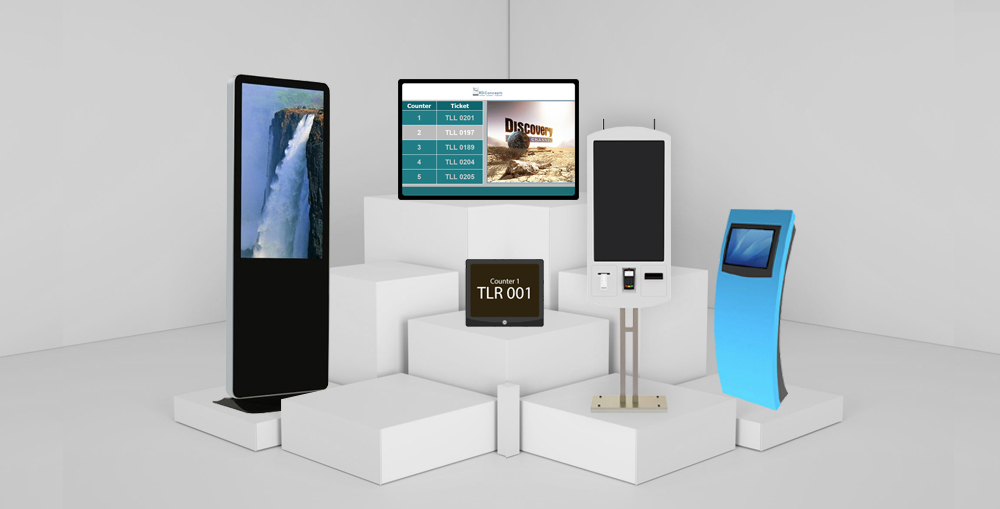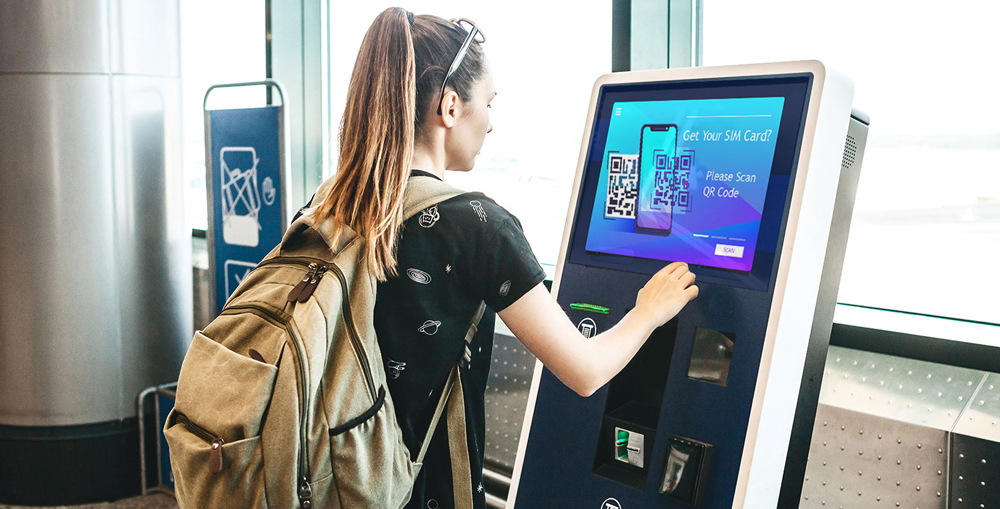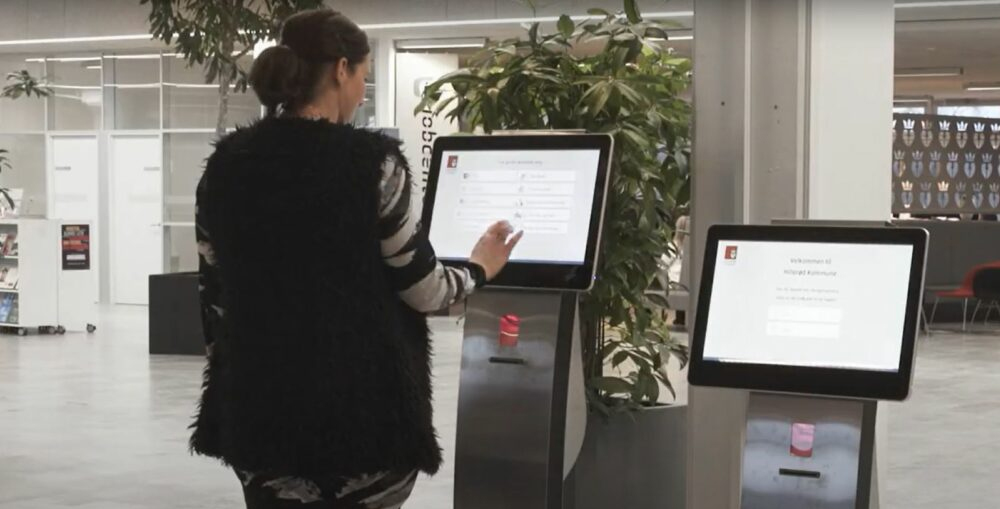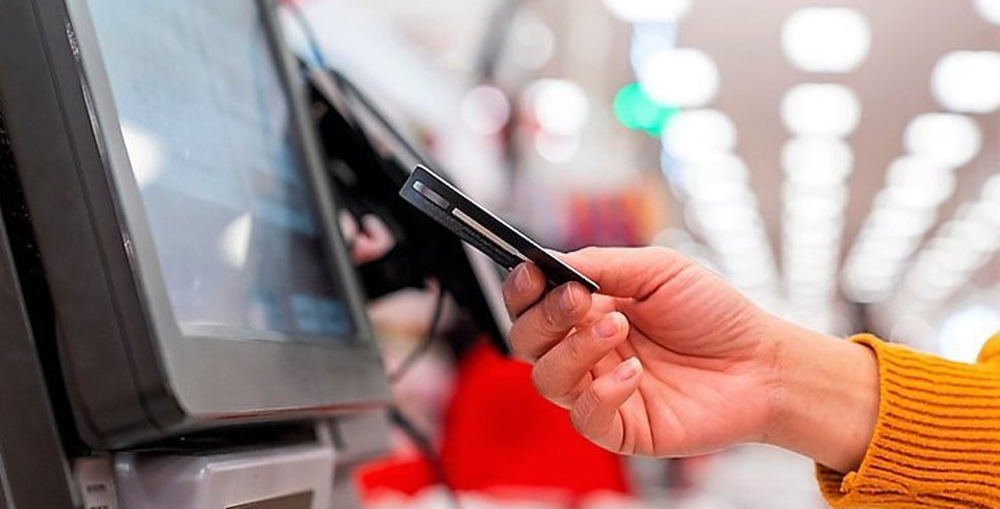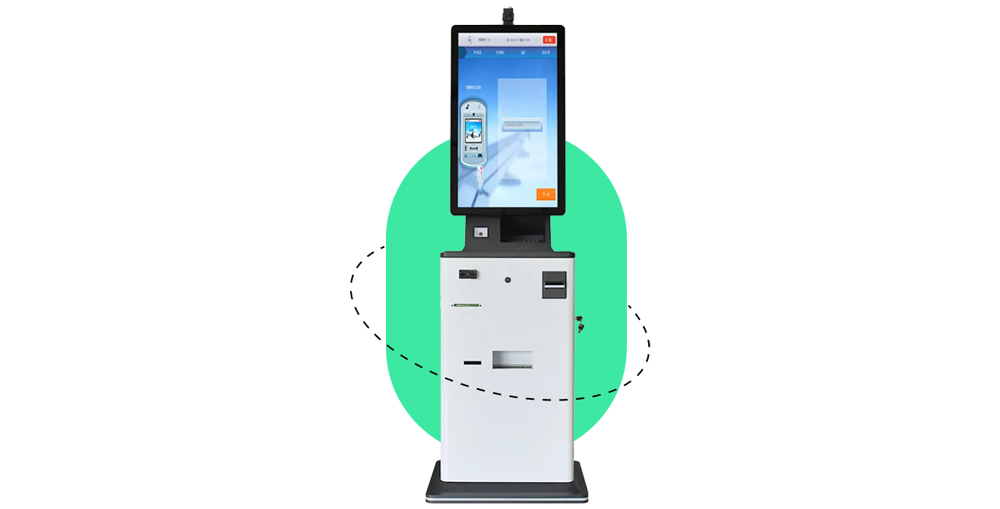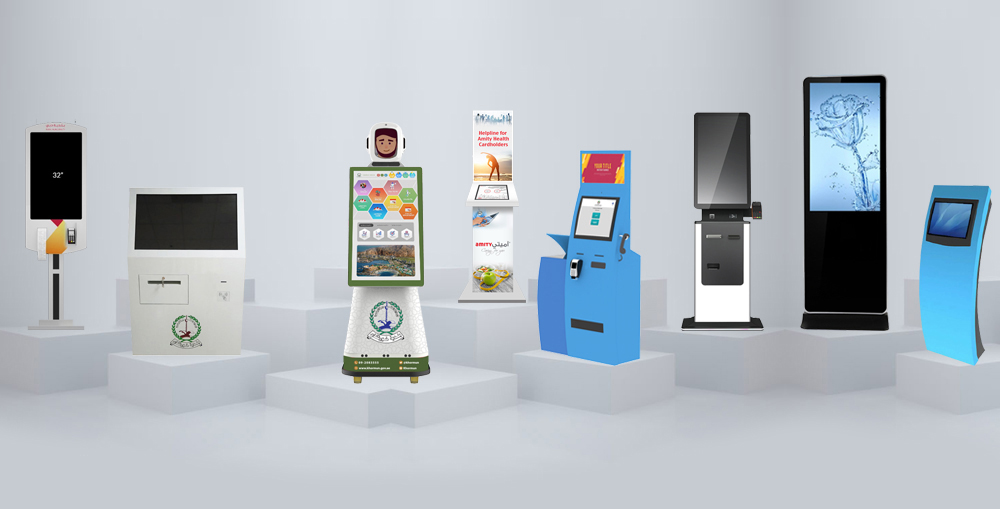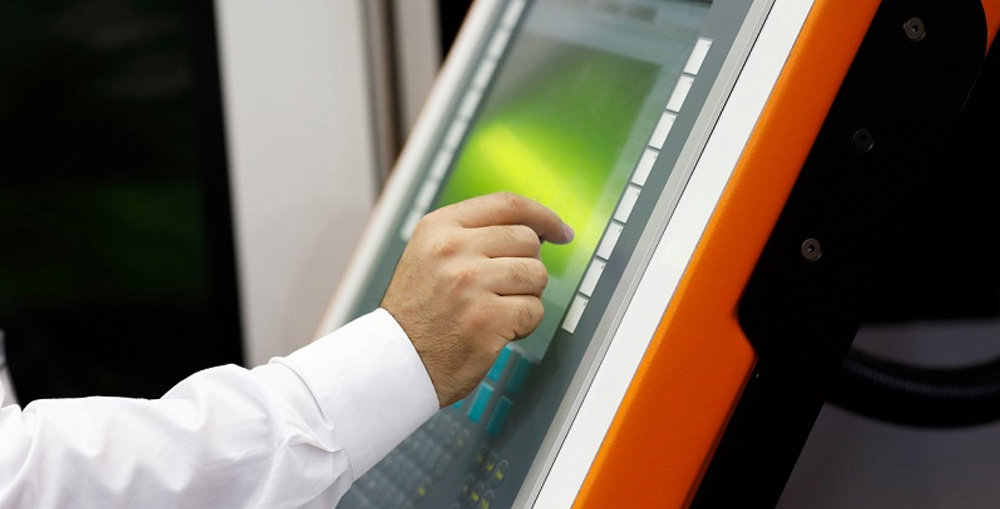We all are accustomed to queues, whether we are at a bank, at a bus station, or at an airport, the waiting lines are common. However, for service sector the customer waiting lines and customer flow management is one of the biggest challenge. Think of waiting in a poorly organized queue, you are not sure of how much more time you have to wait. There are people who are jumping the lines, which makes you more anxious. Suddenly you notice the next queue is moving fast, which further frustrate you. Even in some cases you end up waiting in wrong lines, and have to go back to the correct line. All these are common issues with traditional manual queuing practices.
Therefore businesses tend to deploy modern digital queue management systems. The modern queue management systems usually use interactive self-service kiosks for ticket dispensing and customer registration. However, businesses usually doesn’t leverage the full potential of an interactive self-service kiosk. Mostly businesses use interactive self-service kiosk to welcome and greet customers. Typically these kiosk allow customer to choose the right service they need and that is it. The queue management system analyze the customer choice and print a ticket accordingly. This also help queue management system to automatically route customers to the right service counter.
However, an interactive self-service kiosk can do much more, in this blog we will discuss how a self-service kiosk can boost the performance and impact of your digital queue management system. Furthermore these interactive self-service kiosks are very flexible with customization, which makes them ideal companion for bespoke queue management systems.

The Evolution of Interactive Self-Service Kiosks
The interactive self-service kiosks have started as humble vending machines. However, with the passage of time these machines started improving. The real evolution kick started with the advancements in the touchscreen technology. Later on various multination manufacturers have started investing in R&D which gives rise to various specialized peripherals and internet connectivity. This have completely transformed the interactive self-service kiosk industry. Now a days if you are living in Dubai, Sharjah, Abu Dhabi or any other region of UAE, you would be familiar with these interactive terminals. Whether it is for mobile top ups utility bill payments, or smart airport check-ins these interactive self-service kiosks are popping up everywhere.
See Also: Bank Branch Transformation with High-tech Queue Management System
The primary reason of wider adoptability of interactive self-service kiosks is their ability to deliver unmatched customer experience. The customers also enjoy the convenience, control and easy access offered by interactive self-service kiosks. Furthermore with the rise of IT and communication technologies, smartphones and social media, everyone has become more familiar with technology. Businesses have started investing more resources in digital technologies and digital customer experience management. The interactive self-service kiosks can offer multitude of features such as:
- Customer Identification – Bio Metrics Scanning, Emirates ID Card Scanning, Facial Recognition, etc.
- Customer Registration – Data Input, Document Scanning, Passport Scanning, Barcode/QR Code Scanning, RFID, etc.
- Payments – Cash Deposit, Change Return and Cash Recycler, Coin Acceptor, Credit/Debit Card, POS, Online Payment Gateways, Contactless Payments, Digital Payments, etc.
- Multi-Lingual Intuitive UIs – The self-service kiosk UIs can support any language regional or international which enhance customer experience
- Printing & Scanning – Apart from Ticket printing, interactive self-service kiosks can print and scan QR Codes/Barcodes, Receipts, Vouchers, Documents, Stickers, and even identity cards
- Security and Authentication – The interactive self-service kiosk can utilize OTP SMS, Email-based verification, Facial Recognition, Biometrics and several other ways for secure and instant authentication and identification
These all features enable an interactive self-service kiosk to quickly identify a customer and collect as much data as needed. A typical sing-in using Emirates ID, Biometrics or Facial recognition can take less than a minute from greeting customer to dispensing their ticket number for the queue. This is what makes them more effective and efficient. When the customer arrives at the service counter, their details and other information relevant to their query are already made available for the service agent. Such innovative features help boosting the performance and impact of a digital queue management system.
See Also: What are advance components of Queue Management System?

How Interactive Self-Service Kiosk Makes Queue Management More Effective?
The interactive self-service kiosks are widely used with modern day’s digital queue management systems. A queue management system is a tool businesses utilize to streamline customer flow. It is a combination of software and hardware exclusively designed to implement the queuing policies. This provides businesses great advantage in managing visitors. The customers and visitors sign-in to a queue management system via interactive self-service kiosk. The kiosk allow them to choose the service they need, which help the system to direct them to the right service counter. The interactive self-service kiosks has become a standard in modern queue management systems. It is due to their ability to offer multiple features which further enhance the efficiency of the queue management system.
See Also: How a Queue Management System Can Transform Your Business Operations
Personalized Customer Experience
When a digital queue management system is equipped with an interactive self-service kiosk, businesses can collect valuable information. This information could range from simple language and service selection to a full-fledged customer registration process. The interactive self-service kiosks comes with touch screen interfaces. These intuitive UIs (user interfaces) are designed to simplify the customer journey. Customer can choose the language of their choice. Further they can choose the service from service list, which allow the queue management system to put them in right waiting line. This prevents any confusion or mistake which are common in manual queuing methods.
Businesses can also integrate various identification methods, such as Emirates ID scanner, passport scanner, RFID, Biometrics, etc. This allow them to quickly collect valuable data. Furthermore the queue management system can also relate the customer with the customer database and fetch all the available details. This ability enable businesses to identify the customer persona, and help them deliver a personalized experience at service counters. The interactive self-service kiosk management software provides service agent dashboards which help agents in various tasks. Furthermore these kiosks can be integrated with other system, pushing relevant information beforehand to the service counter, enabling quicker service delivery. These features greatly enhance customer experience and make queuing more effective and efficient.
See Also: Difference in Wired and Wireless Queue Management System

Reduction in Customer Wait Time
The primary objective of a queue management system is to streamline customer flow, enhance customer experience and reduce customer wait time. The customer wait time is one of the biggest reason of poor customer experience. As the interactive self-service kiosks has ability to understand customer needs by allowing them to select the relevant service. They can also prevent common human errors by effectively eliminating confusion from the system. The customers can directed to their relevant service counter, they are assured the just treatment and they get the highly accurate estimation of their time to service. All these features help reducing the frustration and improve customer experience. In a government service sector or a multi-channel service environment these interactive self-service kiosks are even more effective.
An interactive self-service kiosk can take as much information as needed to expedite the service delivery process. The customers can scan their documents, or input their data via interactive touch screens. The kiosk management system help customers achieving their tasks with easy-to-understand on-screen prompts and guides. The customers can scan QR Codes, Barcodes, payment slips, etc. which greatly improve the service delivery mechanisms and reduce per service delivery time. Because all these information are relayed directly to the customer service counters, which greatly help service agents. It speed up the service delivery and help reducing the wait time collectively for everyone. This also help enhancing the performance and productivity of the service staff, as they can focus more on their primary tasks. Furthermore the interactive self-service kiosks can share the work burden by automating data collection and by enabling customer to input their data by themselves. These features can greatly reduce the customer wait time and help improving the entire queuing process.
See Also: Key Tips to Improve Service Quality through Queue Management System

Digital and Cash Payments
One of the biggest advantage of interactive self-service kiosk is its ability to collect payments. There are several businesses who require customers to make payments or pay for their remaining dues. Whatever the case is an interactive self-service payment kiosk can greatly improve the queuing process. They customers who are opting for the queuing token can also make payments at the same self-service kiosk. Above all the interactive self-service kiosk can instantly update all the relevant systems and databases which means the payment will instantly reflect at the service agent’s dashboard. This expedite the service delivery process and also prevent customers from getting into the hustle of making payments through a different channel.
Similarly the self-checkout kiosks are also interactive self-service payment kiosks. In a typical retail environment we all experience long queue, especially at the weekends and during the peak hours. However, the number of cash counters or service counters are limited. This is where an interactive self-service payment kiosk can be deployed as an alternate service channel. These kiosks are specialized as per business needs and are equipped with necessary devices or peripherals which enable a self-service checkout. Whether it is scanning the items, scanning their RFID tags, or acquiring product information, all can be provided through these specialized interactive self-service payment kiosks.
With an alternate service channel in place, the footfall at traditional counters can be reduced. This help reducing the wait time of all customers while significantly improving the queue management system.
See Also: Beyond First-Come, First-Serve: Innovative Strategies for Queue Management

Conclusion
The interactive self-service kiosks have completely revolutionized the traditional queue management systems. The modern digital queue management system vastly rely on these kiosks for customer sign-in and ticket dispensing. However, an interactive self-service kiosk’s abilities are not limited to ticket dispensing. In fact it is a technology marvel offering a wide spectrum of innovative and intuitive features which resultantly boost the queuing performance. These interactive self-service kiosks offers various features such as Emirates ID and passport scanning, RFID, intuitive touch screen UIs, payment options and much more. All these features are designed to automate various workflows and processes which effectively reduce the service delivery time. Once the service delivery time is optimized it will impact on the wait time or all customers, effectively reducing it.
One of the biggest advantage of interactive self-service kiosks is their ability to customize according to the business needs. This makes them ideal for literally any industry, whether you are a banks, hospital, university, government agency or an airport, you can customize these kiosk as per your exclusive needs. An interactive self-service kiosk not only boost queue management system but it has ability to collect valuable analytical data based upon user’s interaction. This data further help businesses to analyze their policies, workflows and customer journey, which resultantly help improving the queuing process and customer experience in the long term.
In this blog we have discussed how an interactive self-service kiosk can effectively boost the performance and impact of a queue management system. If you want to learn more about the subject or if you want our help to build a bespoke interactive self-service kiosk and queue management system for your organization, please feel free to contact us through our Contact Us page or leave a comment in the comment box below and we will get in touch with you soon.








